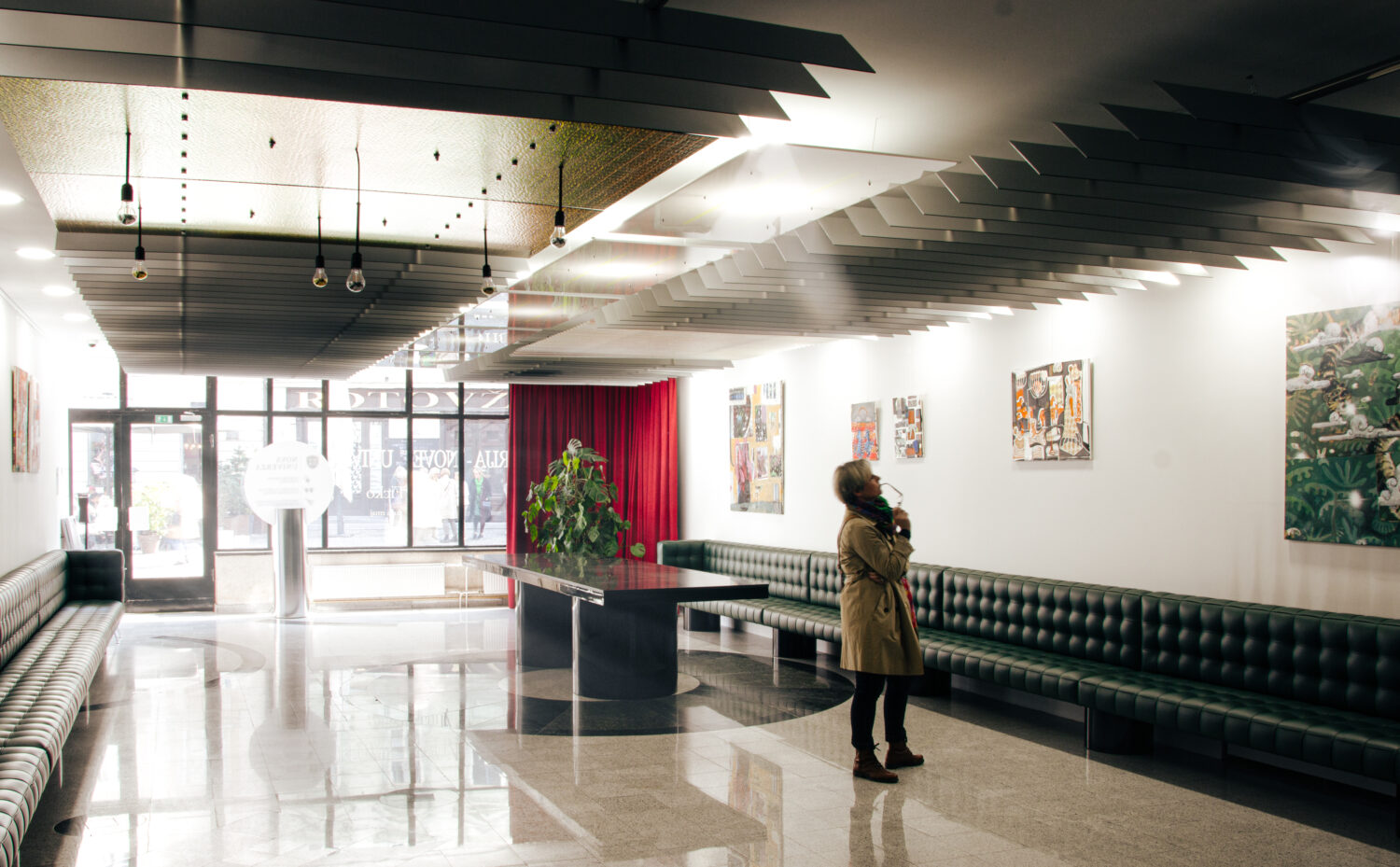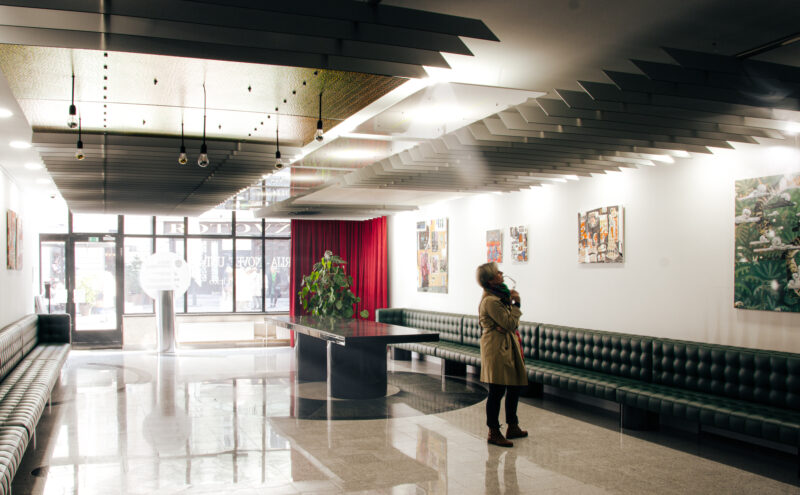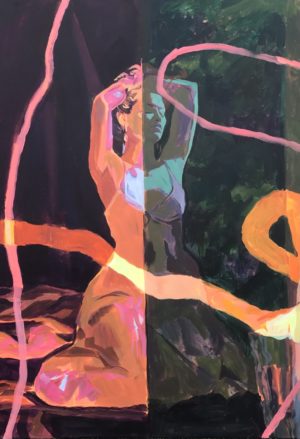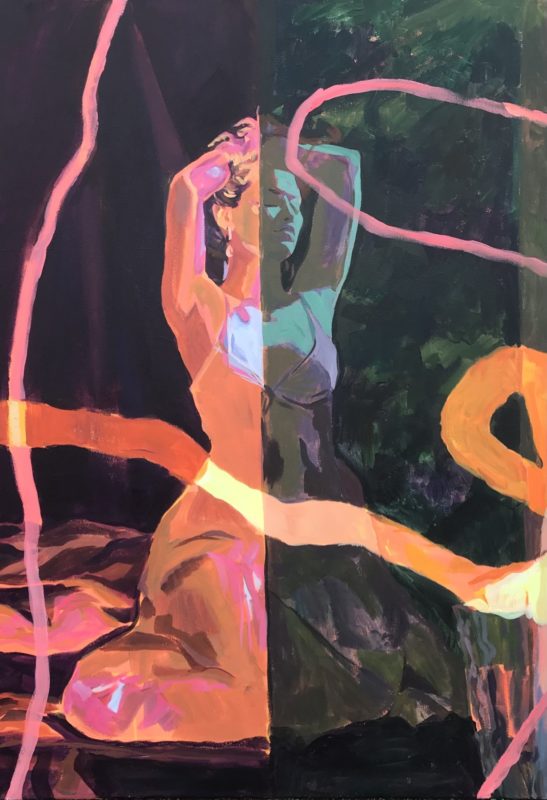
The Gallery of the New university – Faculty of Slovenian and International Studies
- Home
- >
- Activities
- >
- The Gallery of the New university – Faculty of Slovenian and International Studies
About the Gallery of the New university – Faculty of Slovenian and International Studies
The gallery is located in what used to be Miklavčeva’s or Drofenik’s house, which is inscribed in architectural history as the first building in Ljubljana with a skeletal reinforced concrete construction and a prefabricated steel facade. During the renovation of the spatial design and the exterior of the house, it did not lose the Secession elements of the time, but the black surface of the facade gives it an even richer, elegant look and emphasizes the Secession elements by capturing many passing glances. The New university – Faculty of Slovenian and International Studies resides in this unique, beautiful building, located among the rest of the buildings on the City Square in the city center of Ljubljana. The ground floor part of the building with large glass surfaces allows a view into the interior of the hall, which the university has dedicated to exhibition gallery space and the promotion of academic research, student activities and international integration activities. The view through the transparent glass walls of thoughtfully lit works of art has become both an artistic interior and an artistic exterior on the Town Square. The works are monitored daily by students and professors of the New university, passers-by, as well as tourists, who can view the exhibited works of art regardless of the gallery’s opening hours. Since the works of art in the aforementioned gallery are exposed to a narrower and wider public, the artist is both an exhibitor and promoter of the New university, and with socially critical content, he is also a mediator of art as a promoter of the city of Ljubljana. The New university therefore set high professional rules for managing the gallery program.
The exhibition program of the gallery is created with the aim of exhibiting and making available current contemporary domestic and foreign fine art. An artist should be a good ambassador of contemporary life and the daily problems we face as a society. That’s why the motto or content intention of the project is to connect different creators for the exchange of opinions, thoughts, new creative techniques and technologies in different art media, which are used to deal with contemporary social and cultural issues.
The exhibited works of art will represent modern life cycles that concentrically circle artistic creative thoughts: artistic conception, graphic engagement and the transfer of the socio-cultural process into an artistic form as a witness of life.
In the modern conceptual sense, the discussed topic is imbued with looking back to man’s search for his own natural starting points. But the cyclical renewal still rests on the ancient symbolic tradition. The content of the exhibited works can be linked to an ancient motif, typical of a deep contemplative perception of natural existence – ouroboros. Ouroboros symbolizes time and eternity, wherever you go you return to the beginning, the beginning is the end and the end is the beginning of everything, because the repeating solar year is the framework of the divine force of the earth. The symbol entered the Western tradition through ancient Egyptian iconography and the Greek magical tradition. It shows a snake or a dragon (the symbol of the city of Ljubljana “Dragon”). A snake biting its tail forms a circle, thus embracing the whole world and everything in it, where life repeats itself cyclically.
The selection of exhibitors connects academic painters and doctors of fine arts, who have been shaping the Slovenian and wider art scene for many years, into a common story. All exhibitors have already participated in many group exhibitions and have had a number of solo art exhibitions in Slovenia and abroad.
Dr. art. Jožica Medle, Head of the Gallery of the New university – Faculty of Slovenian and International Studies


